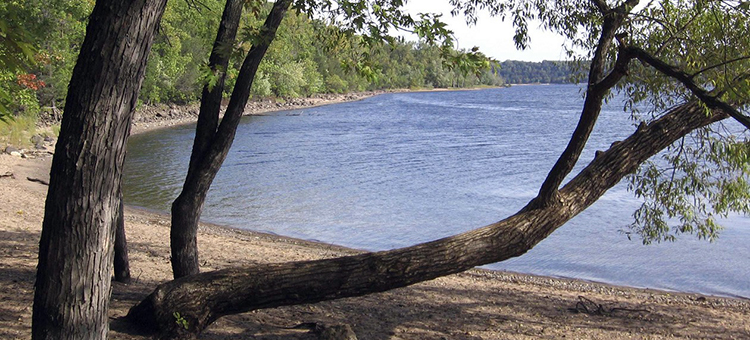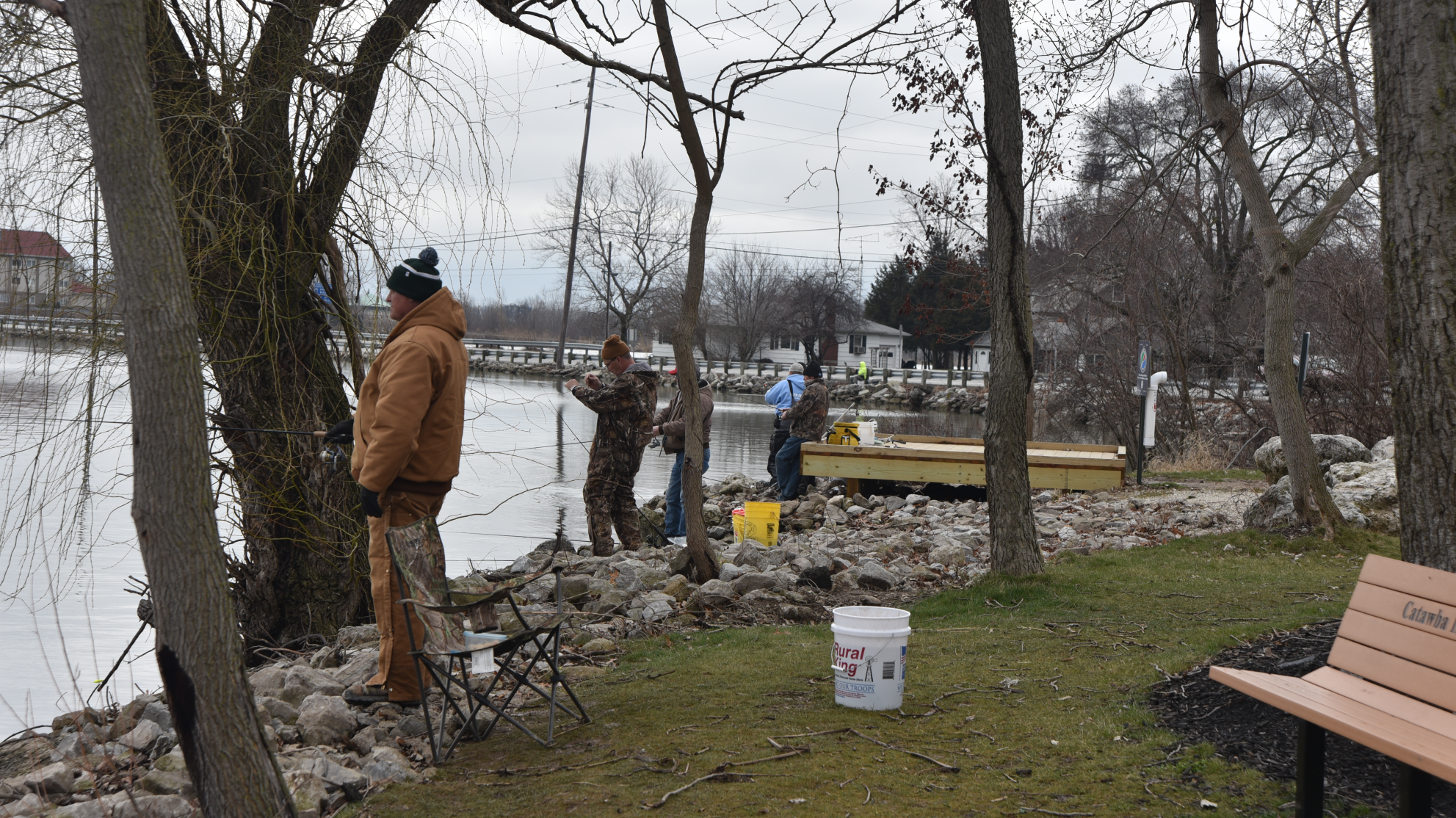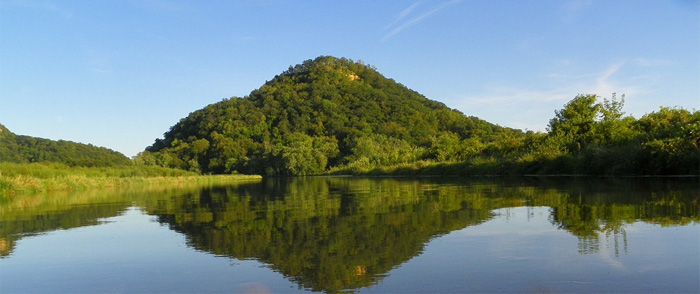
Great Lakes states and provinces have opened up their parks to overnight campers again now that COVID-19 closures have been lifted.
In March, national parks were closed in Canada, along with Ontario provincial parks. In the U.S., while parks remained open to visitors, facilities and many campgrounds were closed to the public.
Pennsylvania and Indiana led the return to camping in mid-May, and other states and provinces soon followed suit. The cascade of reopenings through the month of June has been followed by a flood of campers excited to get back outdoors.
The first weekend after reopening, Michigan campgrounds were over 90 percent occupied. This response slightly exceeded camping numbers at the same time last year, according to Ron Olson, chief of parks and recreation at Michigan’s Department of Natural Resources, and this enthusiasm was matched by campers throughout the Great Lakes region.
“Camping is very popular right now,” said Kim Pleticha, assistant communications director at the Minnesota DNR. “Over the 4th of July weekend, 91.4 percent of our campsites were booked, and we had almost identical usages last year.”
Minnesota began a phased reopening of developed campgrounds in state forests, parks and recreation campgrounds in June, and most were open by June 15.

Afton State Park (Minnesota Department of Natural Resources)
“Usually in spring when I go to Afton State Park there is no one else there — maybe I’ll see one or two other people walking their dogs as well,” she said. “That is not the case anymore — no matter what time I show up at Afton, there are tons of cars in the park and I see people who are camping, they’re hiking, they’re picnicking. It is very, very popular. And that is really wonderful for us at the DNR to see so many people using state parks.”
In two days in June, SEPAQ, the agency which manages Quebec’s provincial parks, sold 123,000 annual park passes, twice as much as they usually sell each year.
In Wisconsin, weekend visitation to state parks was up 18 percent in May and the first half of June over last year, according to Mary Monroe Brown, director of Wisconsin’s Office of Outdoor Recreation.
“Spending time outdoors is good for our physical, mental and social well-being,” Brown said. “And our state parks support the ability of people to get out and social distance and enjoy the outdoors and all the freshwater that’s available in Wisconsin.”
API key not valid. Please pass a valid API key.On the waters
Enjoying the water has been a popular pastime during the pandemic, and fishing and boating are among the recreational activities that have spiked in popularity in recent months. In Wisconsin, resident fishing license sales were up 20 percent in March through May, and first time fishing license sales were up 100 percent in May over last year.
“There’s so many lakes in Wisconsin — over 15,000 lakes and 43,000 miles of river — so we’re finding that people are really getting out on the water, seeking wide open spaces where they can get out, recreate, social distance and feel safe,” Brown said.
Stephanie Vatalaro, senior vice president of marketing and communications at the Recreational Boating & Fishing Foundation, says that RBFF has also seen a wave of increased interest in fishing and boating information after an initial lull in March. The organization launched a campaign called “Get On Board” this summer to highlight the health and wellness benefits of fishing and boating, and encourage people to spend time on or near the water.
“During the pandemic people are seeking ways to get away from it all, connect with nature and spend time with their family, and I really feel like fishing and boating offer those opportunities,” Vatalaro said. “They can be done close to home, they’re fairly easy to get started with, and so we’re trying to be a great resource and make sure everyone can do that safely and responsibly.”

Visitors fishing in late March at a small public fishing access site on a portion of Middle Harbor on Catawba Island. (Photo by James Proffitt.)
Public safety is top priority
As residents of the Great Lakes region look to get out of the house and enjoy their summer outdoors, they should be conscious of distancing themselves from other park visitors.
“The pandemic has not gone away,” Minnesota DNR’s Pleticha said. “It’s still with us and we all need to make sure that we take basic precautionary health measures to ensure that we don’t spread it.” The Minnesota DNR strongly encourages people to practice social distancing and wear masks when interacting with people outside of their households, such as while walking on a trail or in common spaces with other visitors.
“One of the things we’re encouraging people to do, if you’re going camping, is to arrive fully contained and prepared for a rustic experience,” Pleticha added. “You bring your own toilet paper, your own Clorox type wipes, all of the food that you need so you don’t have to run into town to pick anything up. We really want to make sure that people limit their interactions with others as much as possible.”
Michigan DNR is asking people to stay home if they feel sick and bring their own masks and sanitizing products, so they are well-equipped for a safe park visit. The DNR has removed or spread out picnic tables to discourage people from clustering together and has posted signs with nationally recognized symbols throughout the park to remind visitors to stay separated, Ron Olson said.
“We are going to be putting up more vivid reminders at the doors of bathrooms and shower buildings to ensure that people, particularly kids, understand that you’re to wear a mask inside the facilities,” Olson added. “We’re just asking people to cooperate and respect each other, for their own well-being and safety.”
Olson also encouraged visitors to be patient at the parks. “It’s not going to be the same because of the social distancing. If you’re going on a trail, let people go ahead of you or space yourselves out. If you’re going to launch a boat, wait for other people to clear out of the way first. If you’re fishing, maintain a good distance from other people and be respectful of each other. And if people all do their part, it’ll make the experience safer and more comfortable for everybody.”
Although caution and consideration for social distancing is key, outdoor organizations like the Recreational Boating & Fishing Foundation emphasize that outdoor recreation naturally lends itself to the physical distance necessary for public safety.
“You don’t want to be super close to someone when fishing because you’ll get your lines tangled up,” Stephanie Vatalaro said. “Fishing really lends itself to small groups and not standing really close to each other, and I think that’s why we’re seeing a huge increase in interest.”
At capacity? Seek out alternatives
Even when visitors are following guidelines, crowds at state parks could still make social distancing challenging. In Minnesota, some parks are packed enough that people living nearby are encouraging visitors to pay to park on their lawns.
But instead of being discouraged from exploring the outdoors by overcrowding, state officials suggest seeking out lesser known locations. They are working to give the public the education and resources they need to find these “hidden gems” and have fulfilling outdoor experiences, even in a pandemic.
Pleticha urged the people of Minnesota to use the Recreation Compass, available on the DNR’s website, to search for other recreation spots in their area when their first choice is overcrowded. Wisconsin has similar resources at Travel Wisconsin, including free travel guides available for download or mail order, that people can use to search for new places to visit.
“There are really great places to explore in Wisconsin that are off the beaten path,” Brown said. “There’s a place called the Brunet Island State Park in Cornell, Wisconsin, and you can camp on an island right along the water at the confluence of the Chippewa and Fisher rivers. There’s a lot of paddling opportunities, you can hike the Old Abe State Trail, the Ice Age Trail. Or Perrot State Park in Trempealeau, which is right off the Mississippi River and has beautiful bluffs and climbing. The DNR is encouraging people to seek out different places than they would normally go because Wisconsin had abundant opportunities.”

Perrot State Park (Wisconsin Department of Natural Resources)
Websites keep visitors up-to-date
No matter how popular or out of the way a state park is, officials recommend that visitors check the status of the park online before they head out. Even in states where parks and campgrounds have opened their doors again, not every location will be available to visit.
In Minnesota, 85 percent of campgrounds opened in June, with the other 15 percent slated to reopen by early August. Because of COVID-19, parks had to bring in seasonal staff later than usual, and given the work required to make sure campgrounds open safely, this delay in staffing has delayed openings in some areas.
The availability of restrooms, showers and other amenities in state and provincial parks also varies.
Restrooms are now open in at least some parks in all Great Lakes states and provinces. The Minnesota DNR asks that visitors still bring their own hand sanitizer and cleaning wipes, and New York warns that capacity may be reduced at restrooms and they may be closed periodically for cleaning.
Drinking fountains and showers, on the other hand, may or may not be available. Indiana and Michigan are keeping water fountains closed, while the Wisconsin DNR says that some water fountains in remote areas may be closed or there might only be access to the spigot. Ontario is providing drinking water facilities as part of its campground reopening.
Likewise, in Illinois, whether or not showers are open varies by park site, while Ontario will keep park showers closed for the rest of the season.
Pleticha recommended that anyone looking to spend time at a Minnesota state park first check the DNR’s website for COVID-19 alerts and closures.
“On the particular webpage for the park, you’ll see a big alert button that not only explains social distancing, but anything else that might be different as a result of COVID 19,” Pleticha said. “At some parks, flush toilets might not be open because we don’t have the ability to clean those in the way that’s required right now, so it might just be vault toilets. And at other parks the showers might not be open.”
Many state and provincial parks have also added additional cleaning or disinfecting processes for the amenities that are reopening. In Illinois, restrooms and shower houses are cleaned and checked twice daily, and Quebec requires washroom facilities to be cleaned more frequently than they were before COVID-19.
In Minnesota, cleaning procedures drive whether or not beaches are open at state parks, although most state beaches remain closed.
“Where we have enough staff resources to keep the bathrooms clean, we have beaches available for use. That has been one of our guiding principles, but it’s very site specific. So you have to really check the website first before you head on out to any beach,” Pleticha said.
In other Great Lakes states and provinces, many beaches that were closed for COVID-19 have reopened. Visitors could swim at all of Pennsylvania’s 58 state park beaches beginning June 6, and Ontario opened beach access beginning June 12, as maintenance and water tests were completed.
Both public and private beaches reopened in Quebec on June 22. Illinois allowed beaches to open on June 26 at 50 percent capacity as it began Phase 4 of reopening, although the Chicago Park District is keeping Chicago beaches closed.
Given the differences from state to state and park to park, checking what’s open at any given spot is key to an enjoyable outdoor experience. And for users new to the parks, Pleticha also recommends brushing up on trail etiquette before you go.
“Take only pictures and leave only footprints,” she said. “Pack out whatever trash you have, and make sure that you clean up after your dog as well. It’s wonderful seeing so many people getting out and enjoying Minnesota’s public lands, and this is just a friendly reminder to folks that we all share these trails and it’s up to all of us to keep them beautiful.”
Read more COVID-19 news on Great Lakes Now:
Hope and Resilience: Great Lakes islanders continue to adapt to COVID-19 conditions
Inside Entertainment: COVID-19 has Great Lakes aquariums and museums offering online activities
API key not valid. Please pass a valid API key.Featured image: Bay City State Park. (Photo by Natasha Blakely)




